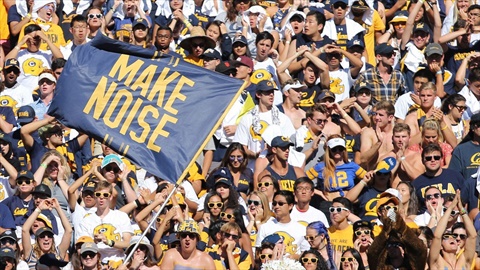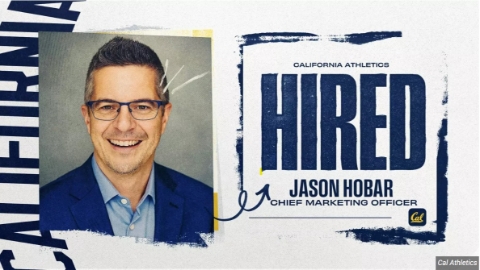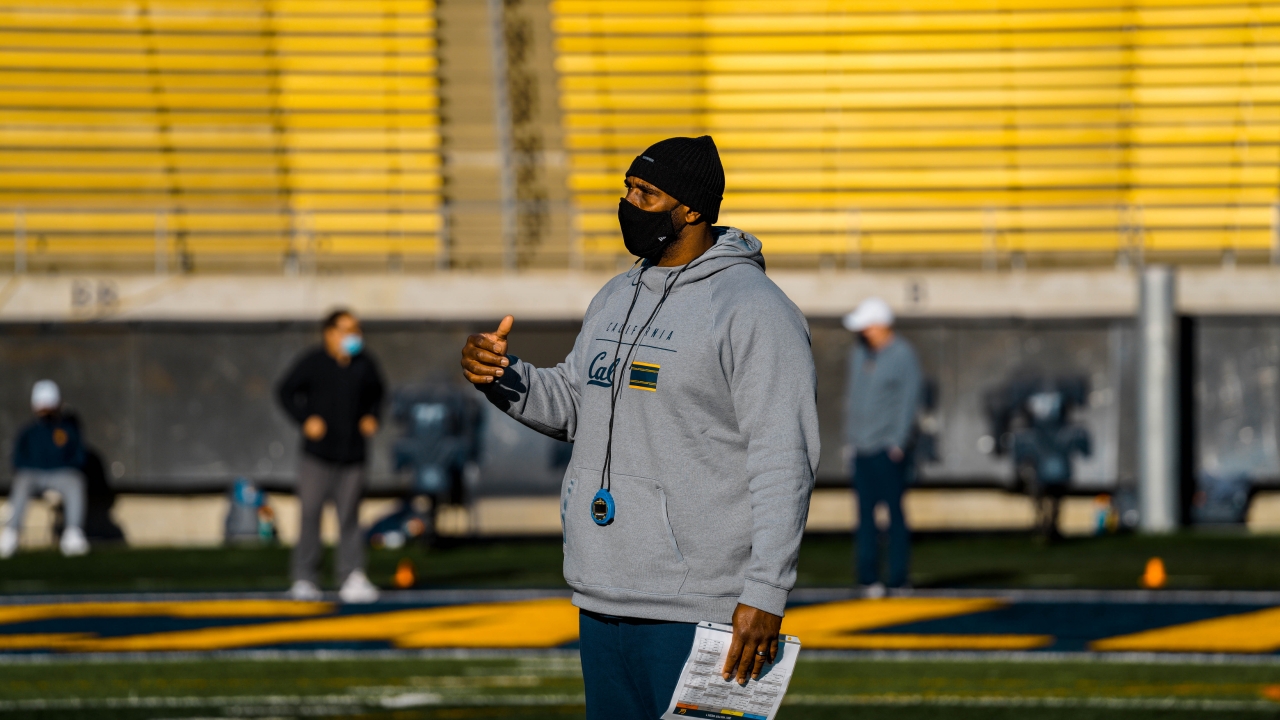
Cal’s new strength and conditioning coach, or to use the Bears; highfalutin title head football athletic performance coach Brian Johnson brings more than ten years of experience to his new job.
He replaces Torre Becton, who moved on after four years to take a similar job at Texas.
In a lengthy interview with the Bay Area media this week the 36-year old Johnson outlined some of his training philosophies and what shape he thinks the Bears are in.
His system, which has evolved in the years working with coaches and players at Florida State, LSU (his alma mater), Texas A&M, Arizona and for two year (2015-16) with the San Francisco 49ers, involves consideragly more than just a set of barbells and a stop watch. His descriptions sound like they are coming from an MD/Psychiatrist than the defensive lineman Johnson once was. He obviously has put a lot of work and thought into devising his programs.
As for the Cal players, Johnson said what you might expect for a group that hasn’t played a game since December.
“I have been around most of the players for the last two and a half weeks,” Johnson said. “They are really in about the shape you would expect them to be in since the last time they had anything was December fifth, we started January 25.
“So just normal conditions for a team that hasn’t played in a bowl game which I have some experience with. I’m not happy to say that, but I do have some experience working with a team that hasn’t been to a bowl game and because of certain circumstances has a long layover period.”
That idleness was exacerbated by the pandemic, which decreased available training options.
“And because of COVID there were not a lot of gyms open and places for them to go out and train and do things like that,” Johnson said.
In the world of collegiate athletic training, paths often cross, so Johnson and Becton are not strangers. And Johnson said his methods might differ from Becton’s, but only slightly.
“I do know Torre. We have had a couple of interactions and our families know each other,” Johnson said. “I think there are some similarities. When you talk to strength coaches some of the basic principles should be the same, but all of us have different methods of how we get to the outcome we are trying to get to.
“There are some differences and can see some of those differences in the operation. Neither right nor wrong, just how we get to the goal. We have talked a lot because we are colleagues and we do share some ideas about we get out team prepared.
Some other highlights from the interview in a Q&A format.
What intrigued you about Cal?
“When you spend enough time in this conference you kind of identify places that are doing things a certain way. Because I knew Torre and I know Coach (Marcel) Yates and hearing a lot about Coach (Charlie) Ragle and actually playing Cal the first year (at Arizona), you can identify teams that are doing things the right way.
“This is one of the places, and when I got a call from Coach Wilcox, looking at how they are recruiting, being known for defense over the last few years. It is just a very attractive job, knowing you are coming with a head coach who’s got a good reputation, who has been doing a good job bringing athletes in, which is really a huge part of the battle. I can call myself as good of a coach as I want to, but I know at the end of the day it’s about athletes and bringing the bodies in that can compete and withstand the rigors of football and go against some of the best in the country. And that’s what they have here.
“And then you walk out of the stadium and you can look out at the bay and you can’t beat some of that. There’s a quality of life here that I appreciate and I spent some time in the Bay a while back as a coach so it’s kind of a no-brainer.”
What have you seen that the team needs?
“Right now just getting them back into the regimen of training every day, making sure guys are eating properly, putting enough fuel in the body, making sure they are hydrating. I don’t see anything different from what I’ve seen in a team I’ve been with for a long time coming back from a break. I am not seeing anything different, any drastic concern. It is just a team you need to get back into football shape. And just reiterating things that help us get to that. I have them in a window of two hours a day. There are 22 more hours that I don’t see them. So just educating and reiterating the things they have to do outside the facility. And that’s the biggest thing, young people needing to be educated and taught the process.”
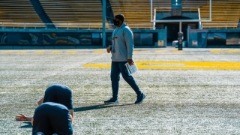
How much does COVID play into your plans?
“Looking at how this thing is going and not really seeing an end in sight, the number one thing is the safety of our players, the safety of our staff, the safety of other athletes on campus. In anything we do that is our first priority, making sure whatever we do, we are being safe, we are adhering to the protocols of the city and state and also the protocols here on campus.
“ It factors into everything. If you get someone with a positive case, you have to allow that person to come back and be re-introduced to actual performing. I can’t just take a player who’s been quarantined, whether they’ve had it or because of exposure, and throw them in with guys that I’ve been training for the two weeks that person was gone. So just having an approach and a system that allows people to be introduced back with the team and being able to perform and go the rigors of training and getting ready to play football.
“ So COVID-19 changes a lot of things, but it’s not like I had to completely change. It’s just a different thought process in our approach because there’s another aspect that we normally don’t have to deal with.
WHAT do you start with as a base when they’ve had all that time off and when spring ball starts isn’t completely set down yet?
“First and foremost, it’s all about understanding where you are trying to get them to and then working back from there. Usually, when you don’t have those long layovers, you don’t have to work back as much. For me, understanding training, understanding progression and regression - I regress things all the way back to movement in its most simplest form and teaching just the basic principles of movement. Reintroducing them into the volumes and intensities that will be placed on them possibly getting into two-hour practices and three-hour games where every play is maximum effort.
"It’s just about having an understanding - a lot of our data gives us an outlook of what practices and games will look like and then regressing that back to where you can evaluate. Usually the best evaluation is when you can do more things under a more controlled environment. For example, I’ll put them in tennis shoes and we’ll do sprint days, we’ll do change-of-direction in tennis shoes. That equalizes and regulates how much force and intensity they can put in a movement or whatever we’re asking them to do. We’re allowed to evaluate and we don’t get close to any type of soft-tissue injuries or simple strains or things like that leading up into when it gets out of our control when they get to practice. They’ve had a base and foundation of conditioning."
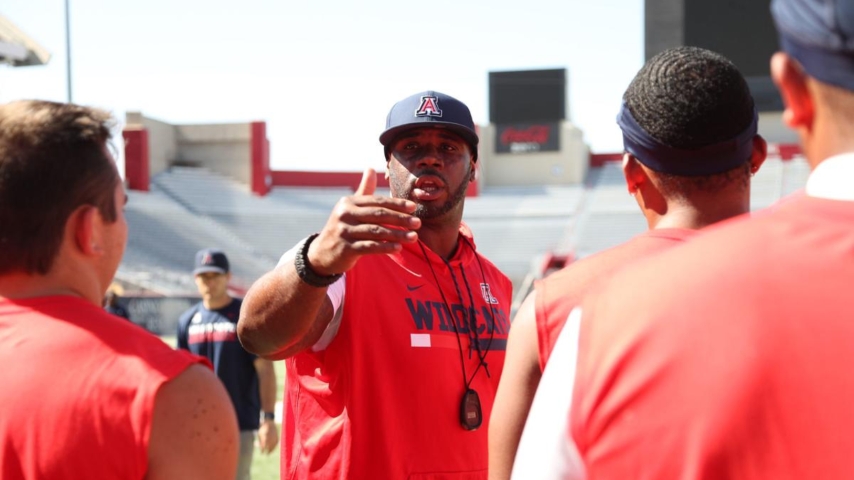
How does your approach differ?
“I think all strength coaches are trying to make their players bigger, faster, stronger - we’re trying to gain that edge. I think my approach is different, one because I come from a long line of strength coaches that could be considered some of the best in the business. There’s more to how we do things, attention to detail … I’m going to look at the data, communicate that data, I’m going to ask questions, and make sure I find the answers to those questions. When I find more questions I’m going to work my butt off to find more answers. There’s a very detailed approach.
“Everything we do has a reason.I’m not just putting stuff on paper just to go out there. I’m not saying that every other strength coach does that. I am just saying this is what I do. I can’t speak for what everyone else does.
"I also require the attention to detail from my athletes as well. I require a certain standard from them because those are he same standards I’m held to as an employee as Cal … and when I was a player and worked for some of the best coaches and strength coaches and played for some of the best coaches and strength coaches in the business. I think what sets me apart is that I’ve been with a long line of people who have done things the right way so I feel like I’m doing things the right way. And if I ever come across something I feel isn’t right, I don’t have a problem in changing my approach or changing my philosophy.
What data are you taking and how are you relating it to your training program?
"The biggest thing is our GPS monitoring system. That just gives us a bunch of different metrics. There are so many different data points we can get but we try to keep it basic so we don’t get lost in data because there’s so many other things we have to see. It’s a strategic way to find out … You figure out which metrics of volume you want to look at - time is a metric of volume, we can look at yardage and then just overall load. And then we can break that down into the intensity metric and that gives us a picture of what type of volume we’ve got. What’s the max velocity, what’s the fastest they ran that day in miles per hour? How much yardage did they get at those velocities? All of it is based on a percentage of what that individual does.
“We take a look at those things. If it’s a linear speed day, we are looking at getting a certain amount of high-velocity distance, trying to get certain velocities, I’ll put them in tennis shoes becasue it’s very hard to run max vecloity. It’s hard to run 20 miles per hour in tennis shoes. If you’ve got guys running 20 miles per hour in tennis shoes, I’m doing a great job.
You put them in tennis shoes so you can regulate some of those intensities. And when you put them in cleats uou hope you get more high intensity yardage. You get more yardage because they are actually moving faster in shorter, taking a shorter time to get to those high speeds.
"Once we get to the point we feel comfortable with the athletes going full speed every rep … We’ll call out, ‘Hey, this guy ran 21 miles per hour, this guy ran 20 miles per hour.’ Then it becomes competitive and guys are pushing and giving you a little more. It’s a gradual process where we’re always trying to communicate to the athletes what they want. These are very smart athletes at Cal and they want to know what is this and why is this. The data helps us educate them. After we’ve been together three or four months, when I say I want 85 percent, they know what 85 percent feels like and what they need to do."
More Stories:
Heyward Talks About Transition to Cal (Premium)
Wilcox Talks New Staff, Returning Players, Spring Ball and More
Cal OC Musgrave: 'We Will Take the Training Wheels Off’ (Premium)
